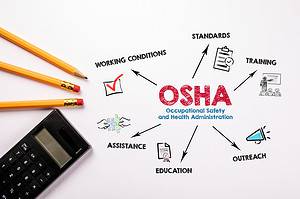isixsigma.com

Expert Tips and Tricks for Using a Sample Size Calculator in Your Data Collection
Updated:It is usually impractical to measure everything if you are trying to collect data. That is why you will use an appropriate sampling technique. But how big a sample should you get? Using a sample size calculator will make that task quick and easy. Let’s see how. When you are required to collect data to […]
Read more »
How to Define Scope for Your Six Sigma Project
Updated:When writing your Six Sigma project charter, it is important to clearly state the scope of the project, so the team doesn’t attempt to “boil the ocean” or “solve world hunger”. Scope puts some boundaries and constraints on the activities of the project. In the context of Six Sigma, scope refers to the boundaries and […]
Read more »
Optimizing Experimental Efficiency with Saturated Design Techniques
Updated:A saturated design, in the context of Design of Experiments, is a simplified experiment used for screening possible significant factors. It is designed to give you a high-level understanding of the main effect of factors, but not their interactions.
Read more »
Ship Dates: Essential Strategies for Meeting Deadlines and Exceeding Expectations
Updated:Ship dates may seem arbitrary, but they can have a major impact on the financial bottom line of your organization as well as how satisfied your customers are. Choosing ship dates that are realistic and that are in sync with when your customers expect products to be delivered is a fundamental part of doing good […]
Read more »
Track Your Business Success with a Scorecard
Updated:A scorecard in sports indicates which team is winning by monitoring an important metric such as number of runs, or baskets or touchdowns. Your business scorecard can provide valuable information on how your organization is doing. In business, a scorecard is a tool used to measure and track the performance of an organization or specific […]
Read more »
How Soft Savings Shape Organizational Success
Updated:Soft savings are benefits gained from Lean Six Sigma projects that cannot easily be assigned a dollar value. These include things like greater trust, reduced frustration, and increased job satisfaction.
Read more »
Responsibility
Published:Defined or assumed conditional liability before the fact – limited to overt practices. Capacity to be responsible assumes the use of adequate expertise and capability.
Read more »
Scatterplot
Published:A graph of the points representing a collection of data, is one of the most useful techniques for gaining insight into the relationship between two variables.
Read more »
Achieving Excellence Through Quality Management
Updated:The strategy of continuously improving your organizational processes by setting your goals, identifying deviations from those goals, and then taking appropriate actions to adjust your processes to close the gaps.
Read more »
Random Sample
Published:A data point taken at random from the universe or population of your process.
Read more »
SCAMPER: Generating Creative Approaches to Process and Product Enhancement
Updated:SCAMPER is an acronym for a simple approach to creative brainstorming. The technique uses a series of questions that prompt you to come up with creative ideas for improving products and processes.
Read more »
Quality Control: Key to Delivering High-Quality Products
Updated:If your organization is known for its high-quality products and services, then you should perceive that as a good thing. But did the concept of quality control help you get there? Let’s explore what quality control really means. Quality is often defined as having your products or services meet your customers’ specifications or expectations. Control […]
Read more »
Quality Dictionary: A Key Tool for Effective Communication in Six Sigma Methodology
Updated:Overview: What is a quality dictionary? In the Six Sigma methodology, effective communication is essential to ensure all stakeholders are working towards the same goal. A quality dictionary is a critical tool in establishing a common language and understanding of key terms and concepts related to quality and process improvement, helping to reduce ambiguity and […]
Read more »
QS-9000
Published:Say what you do and do what you say is a phrase often used to summarize what quality standards like QS-9000 are all about. Although now obsolete, let’s explore what it was and what replaced it.
Read more »

Quality Procrastination
Updated:Quality improvement takes dedication, time, and resources. With this being the case, many find myriad excuses to hold off on quality improvement efforts until the very end, usually to the detriment of their organization. Being able to offer quality products and services to your customers needs to be a primary focus of your business. When […]
Read more »
Mastering the Art of R-Square Calculation: Tips and Techniques
Updated:R-square is the square of R. That’s easy. But what does it really mean, and how do I interpret it?
Read more »
How Risk Based Maintenance Improves Your Business
Updated:Risk based maintenance (RBM) is the result of combining lean management philosophy with conventional risk management. You could also call it “smart maintenance” or “informed maintenance” since it relies heavily on data and planning. It has useful implications in both risk prevention and crisis management. Overview: What is risk based maintenance? Companies that employ a […]
Read more »
A Complete Guide to Risk Based Inspection
Updated:Inspection of the structures and machinery in manufacturing plants was once done primarily through industry practices that were rooted in health and safety regulations along with prescriptive codes. Unfortunately, this type of inspection did not take into account the risk of failure, environmental conditions, and so forth. A more well-rounded approach to inspection was developed […]
Read more »
Return on Investment (ROI)
Published:Financial business metrics can be jargon-heavy and cumbersome to use. We simplify and demystify return on investment, making this accessible to all and giving you the confidence to use in your daily business life.
Read more »
Quality Control and Management: The Role of Quality Attributes
Updated:A quality attribute is a characteristic of a system that is used to evaluate the system’s performance from the perspective of the end user.
Read more »
Implementing Quality Function Deployment to Strengthen Product Design
Updated:How do you take your customer’s requirements and drill down through the entire product or service development process? Quality function deployment is a great way to do that. Let’s see how it is done.
Read more »
Q1: A Key Metric in Analyzing Performance and Progress
Updated:What does it mean when you see the phrase Q1? Using the common phrase of consultants, it depends, the definition of Q1 is dependent upon the context of its use. Let’s examine the possible definitions. While the phrase Q1 seems simple enough to understand, the true meaning will be a function of the context in […]
Read more »
Project Scope
Published:Effective scope management keeps your project on track by establishing clear goals, progressive milestones, performance standards, and specific restraints across every stage of the process.
Read more »
Proactive Problem-Solving: Rare Event Statistical Process Control Charts
Updated:With statistical process charts (SPC), you have a statistical approach that is accessible and allows you to find solutions to system and process problems. One type of chart that falls under the SPC umbrella of tools is the rare event SPC. When rare events occur in your industry, it is necessary to monitor them to […]
Read more »
Queuing Theory: A Solution for Shorter Lines and Happier Customers
Updated:Have you ever waited in a line at the grocery store or bank? The British term for a line is a queue. Queuing theory is the mathematical study of waiting in line. Let’s learn more about this. The British refer to a line as a queue. Queuing theory is the mathematical study of people, objects […]
Read more »
How to Analyze Quantitative Variables
Updated:In statistics and math there are two types of data: quantitative data and categorical data. A variable that represents quantitative data is called a quantitative variable while a variable representing categorical data is called a categorical variable. Overview: What is a quantitative variable? Quantitative data represents values and numbers which can be measured or counted […]
Read more »
The Importance of Process Measurables in Data Analysis
Updated:The term “process measurables” is incredibly narrow and also incredibly broad. In the scope of overall business management, it can seem like a pretty narrow and technical concept. However, for process managers, it’s a concept that can describe hundreds of different things in one project alone. Overview: What are process measurables? A measurable is any […]
Read more »
Parts Per Million (PPM)
Published:The term parts per million, or PPM, is used in a number of contexts in engineering, chemistry and process improvement. We will focus on the application in continuous or process improvement.
Read more »
Precision
Published:Precision is how companies build systems that enable them to deliver the right solutions to their customers’ problems at the right times, repeatedly. Does your company do that?
Read more »
What Every SS Practitioner Should Know About R
Updated:You are convinced there is a correlation between your X and Y variables. But, you won’t know for sure until you can establish the strength of the correlation. That’s where R comes in. Let’s learn some more about R. R is the symbol used to represent the strength and direction of correlation between continuous variables. […]
Read more »
The Benefits of a Process Management System
Updated:Process management, sometimes referred to as Business Process Management (BPM) is a systematic approach to ensure that your organization’s business processes are aligned in an efficient and effective manner, and aligned with your organization’s strategic goals. Some of the benefits to having a process management system in place are: Overview: What is process management? The […]
Read more »
Preventive Action
Published:Preventing a problem is better than correcting one. Anticipating and avoiding potential issues before they arise is a hallmark of strong business management.
Read more »
The Benefits of Having Quality Records in Six Sigma Projects
Updated:Keeping records is a necessary part of any business. This extends to everything from business transactions to a company’s quality management system.The proper formatting, cataloging, storage, and maintenance of quality records are all vital facets of an organization’s quality management system. Overview: What is a quality record? A quality record can be defined as the […]
Read more »
Producers Risk
Published:You can’t be right all the time when making decisions about your process. But, you can manage that risk. Producer’s risk is one of those risks, so let’s learn a little bit more about it.
Read more »
Discover the Magic of Probability: The Ultimate Guide for Beginners
Updated:Have you ever heard someone ask the question, “What’s the odds of that happening?”. Well, that’s the concept of probability. Let’s learn a little more about probability and how it can be used in your organization. When you start discussing probability with someone else in your organization, you may hear the words deterministic or stochastic. […]
Read more »
How Your Practices Can Improve Your Processes
Updated:Having the right processes is integral to the success of your business, but having the right type of practices in your organization helps make sure that the work being done to implement those processes is approached from the right perspective. Getting a task done is necessary, but it is also important to look at how […]
Read more »
OSHA: Ensuring Safe and Healthy Work Environments
Updated:Many organizations claim that safety is Job #1. The Occupational Safety and Health Administration is an agency in the U.S. Department of Labor which is responsible for ensuring that companies provide safe and healthy work environments for their employees. OSHA stands for Occupational Safety and Health Administration. It is a federal agency of the United […]
Read more »
Understanding Output: The Key to Achieving Desired Results
Updated:When you work on a process, there is always a result. These results can be broken down into outputs and outcomes. Whatever you put into your work results in the degree of your output. Your output is dependent on the strength of your input, so it is vitally important to choose the right inputs that […]
Read more »
The Significance of OEM in Product Manufacturing
Updated:When you want to replace a part in your car, you should ask whether it is OEM or aftermarket. OEM parts will be the same as the part you are replacing. An aftermarket part may be similar but will not be from the same manufacturer or supplier who originally provided the part. Does it matter? […]
Read more »
How to Use the P-Value to Evaluate Your Data and Draw Conclusions
Updated:Is there a real difference between machines? Did what I changed really help? Does a relationship really exist between temperature and pressure? The answers to these questions and others can be provided by the p-value.
Read more »
Maximizing Efficiency with Operation Cost Targets
Updated:In business, it is vital to have a firm grasp on the maximum amount of expenditures a project can allow. This can mean the difference between being profitable or falling into the red. For every project you undertake that requires funds, you need to know how much you can comfortably spend on it. Beyond that, […]
Read more »
Prevention Cost
Published:Lean Six Sigma prevention cost analysis (PCA) is an important tool that can help businesses prevent costly mistakes and improve their bottom line.
Read more »
Optimization: Key to Reducing Waste and Improving Quality
Updated:Nothing is perfect, but almost everything can be made better. That’s the basic philosophy behind any optimization strategy. Optimizing is an activity that businesses pursue when they are generally satisfied with the entry criteria and scope of a particular process, but want to further improve the efficiency or reduce output variability. Overview: What is optimization? […]
Read more »
Noise
Published:For any process you collect data on, there will be a signal and some noise. Unfortunately, if the noise is loud enough, it will drown out your signal. Let’s see what we mean by noise and how we can mitigate its impact.
Read more »
Step-by-Step Guide to Project Selection
Updated:The purpose of Lean Six Sigma is to identify opportunities for improving organizational processes. One of the challenges is the selection of projects for improvement teams to work on. Let’s learn more about how to select impactful projects. Both Lean and Six Sigma projects are used to improve organizational processes. Improvement teams are formed. DMAIC […]
Read more »
The Crucial Role of Primary Metrics in Validating Six Sigma Improvements
Updated:The primary metric is a numeric output used to understand your process. It makes the process objective, setting the stage for successful improvements that align with the organization’s strategic goals.
Read more »
Assessing Process Performance: The Value of Establishing Baselines
Updated:How do you know if your diet is working? You need to start with a baseline and then measure change from that. You should do the same for all your processes. From that process baseline, you can know whether your process is getting better, worse, or not changing. The term “process baseline” typically refers to […]
Read more »
Procedures: The Key to Consistency in Business
Updated:There are all kinds of procedures for the many things that people do every single day. Every family household has procedures for basic tasks like putting dishes away, assembling for dinner or getting into the car. Likewise, every place of business has procedures for the essential activities they do on a regular basis. Overview: What […]
Read more »
Process Failure Modes Effects Analysis (PFMEA)
Published:Complex processes increase the likelihood of error states occurring. Scrap, defects, unnecessary work in progress, and warranty are all expensive. We’ll show you the benefits of adopting the process failure mode and effects analysis approach for your business.
Read more »